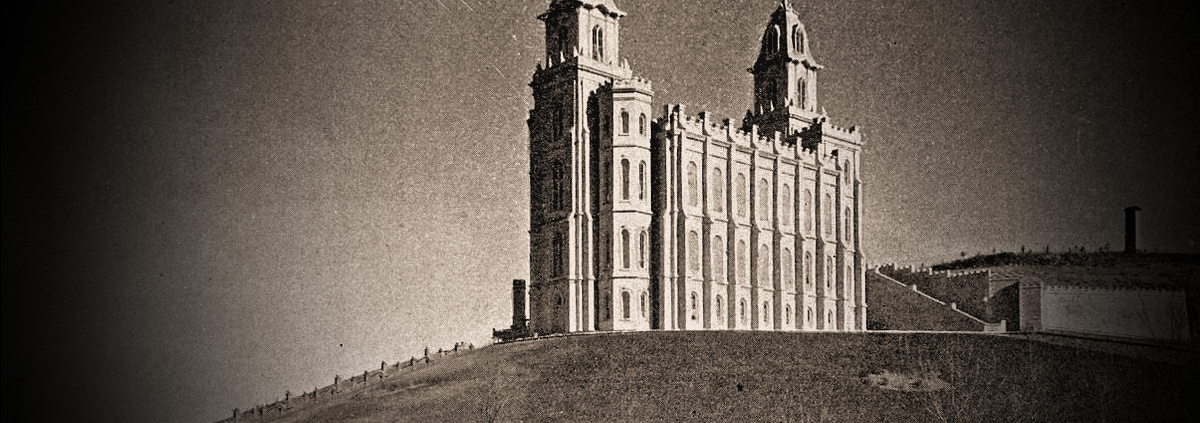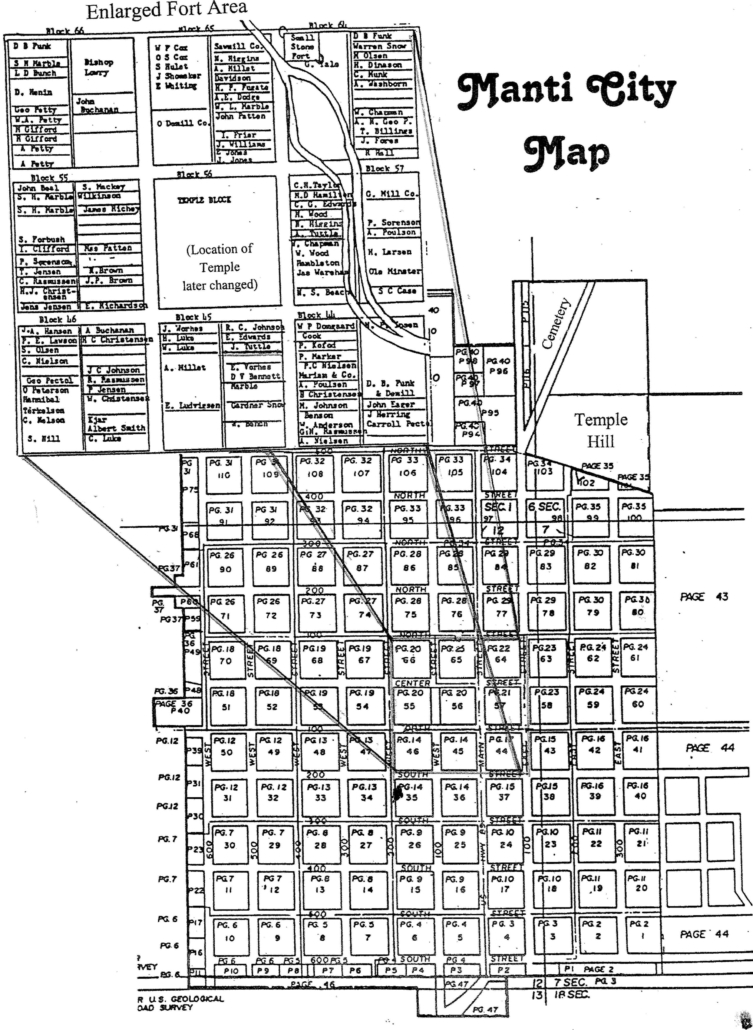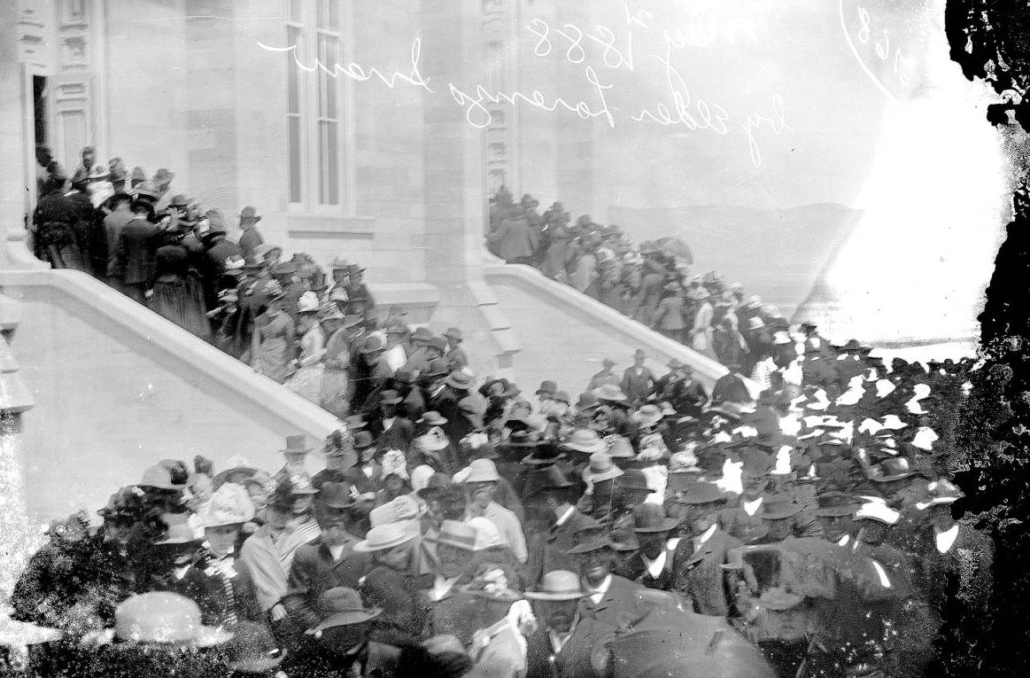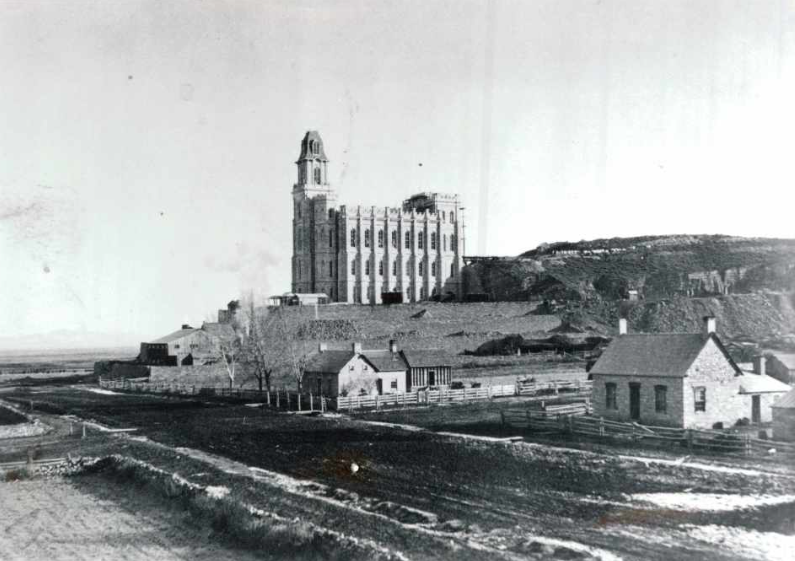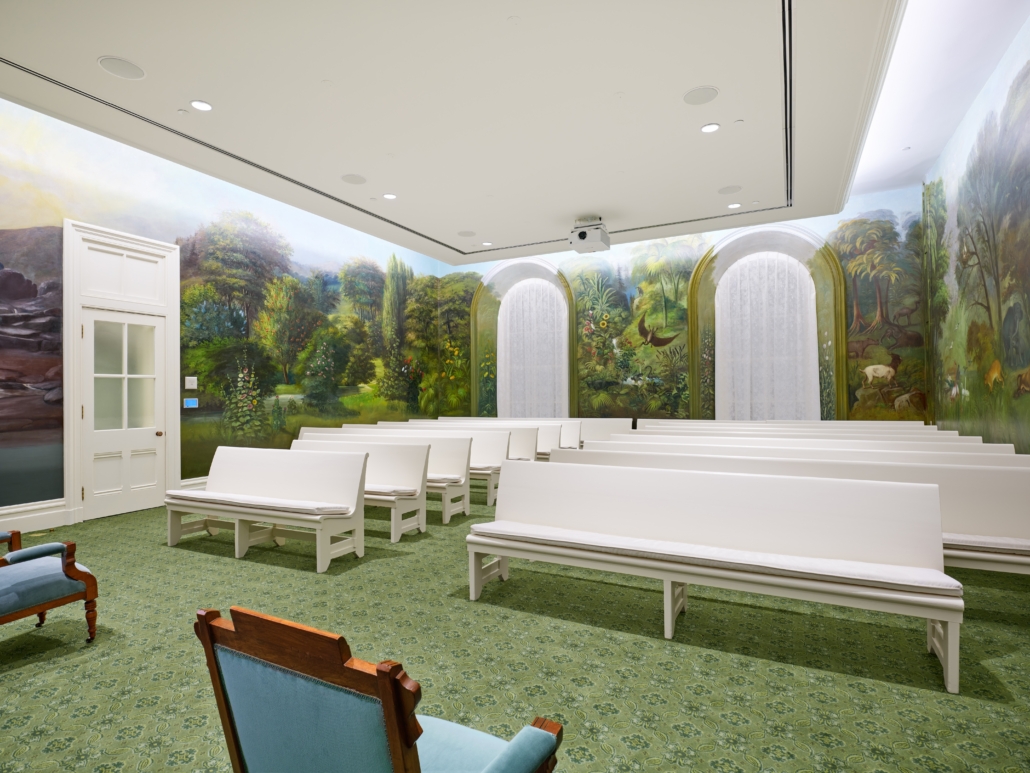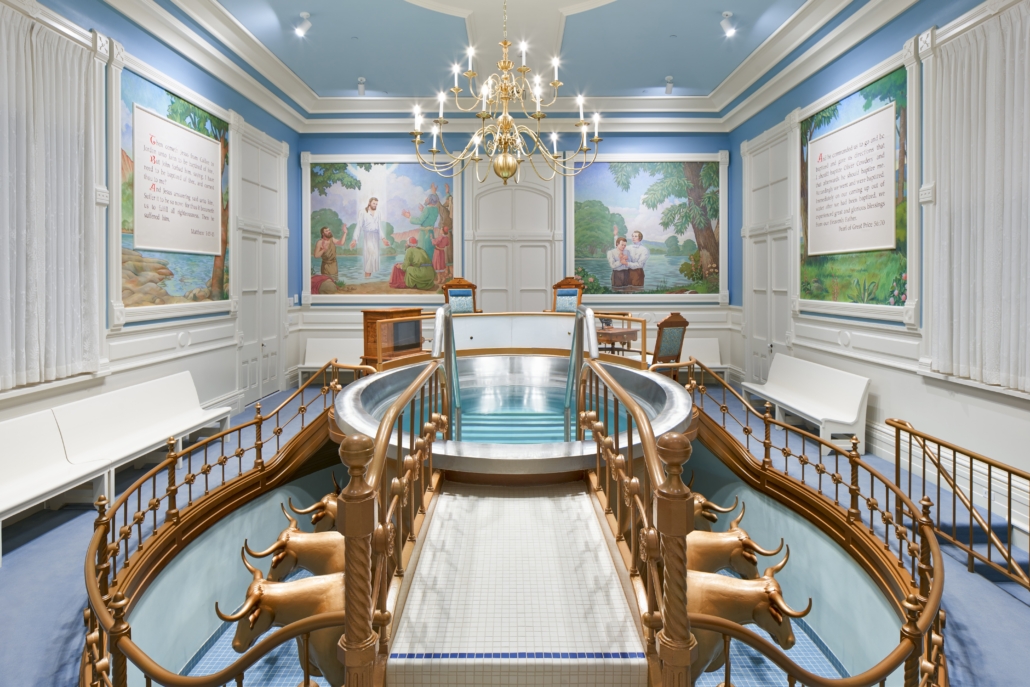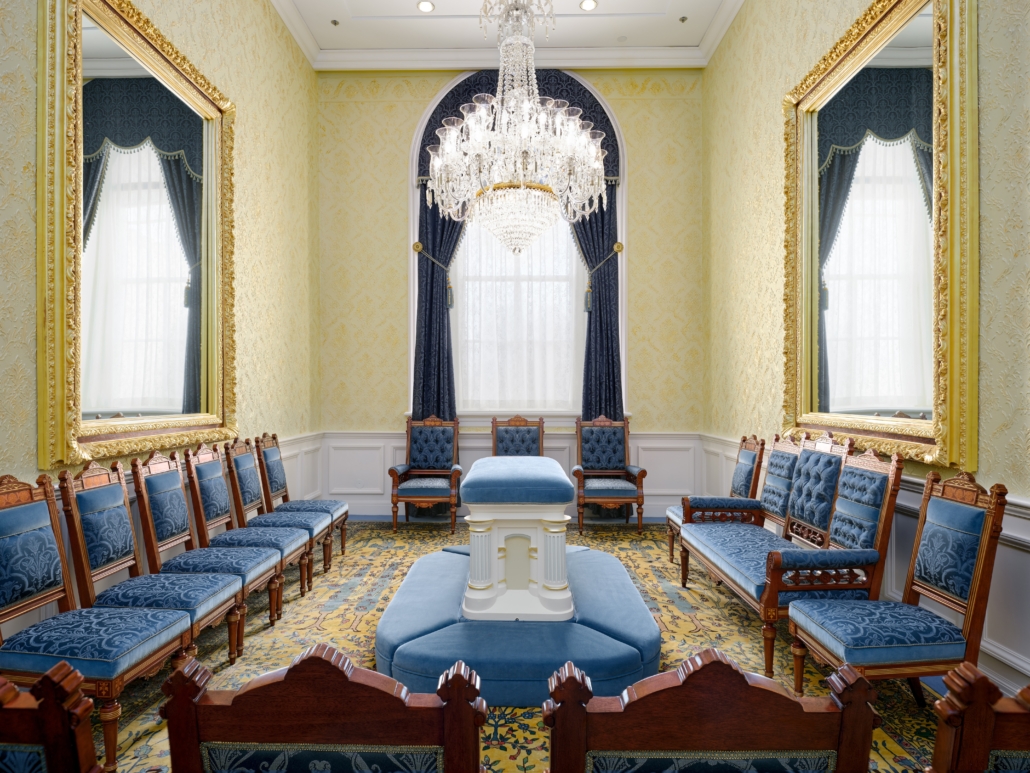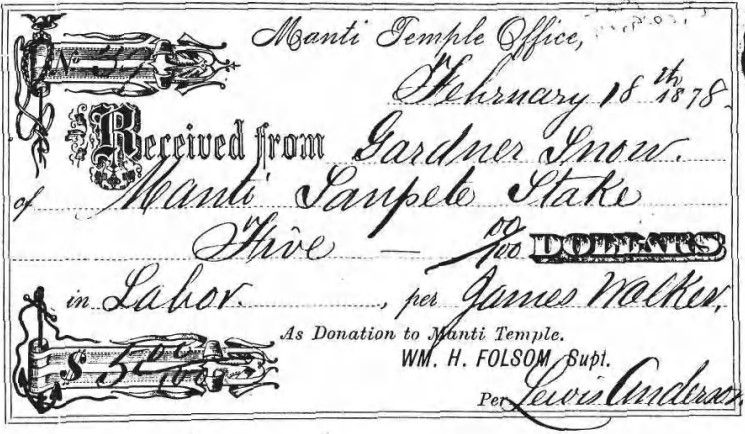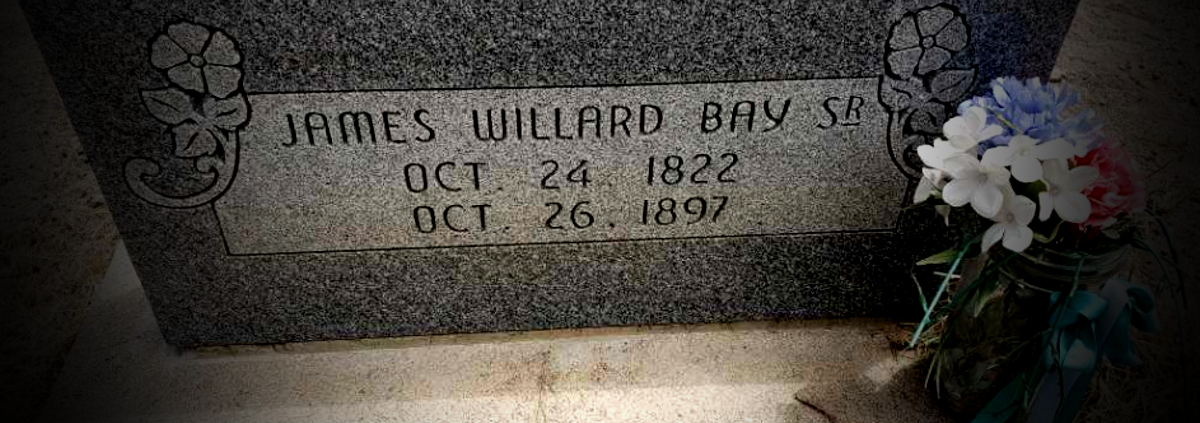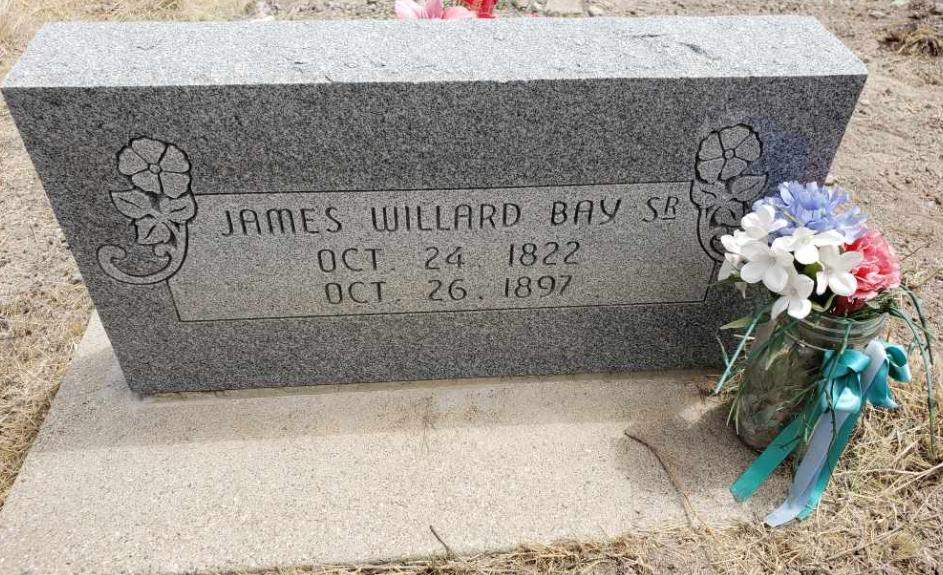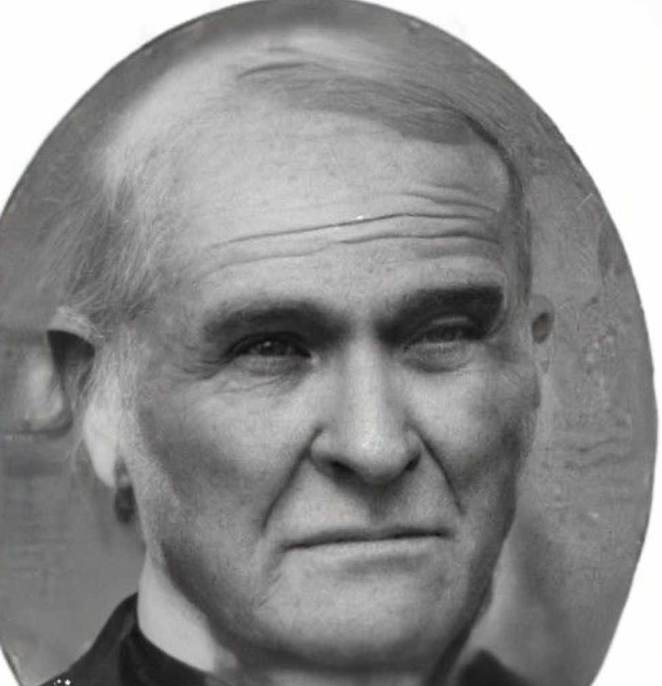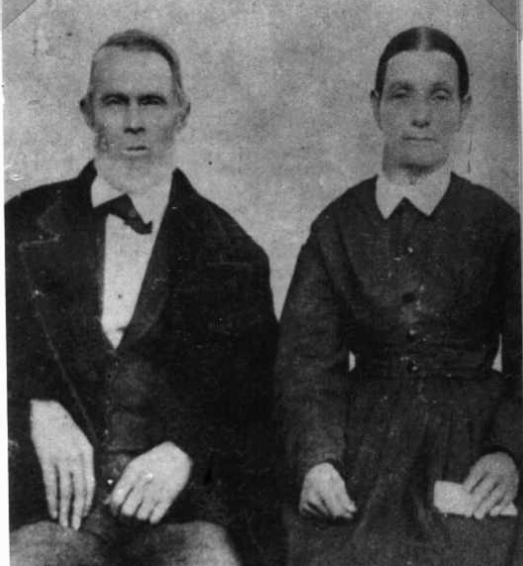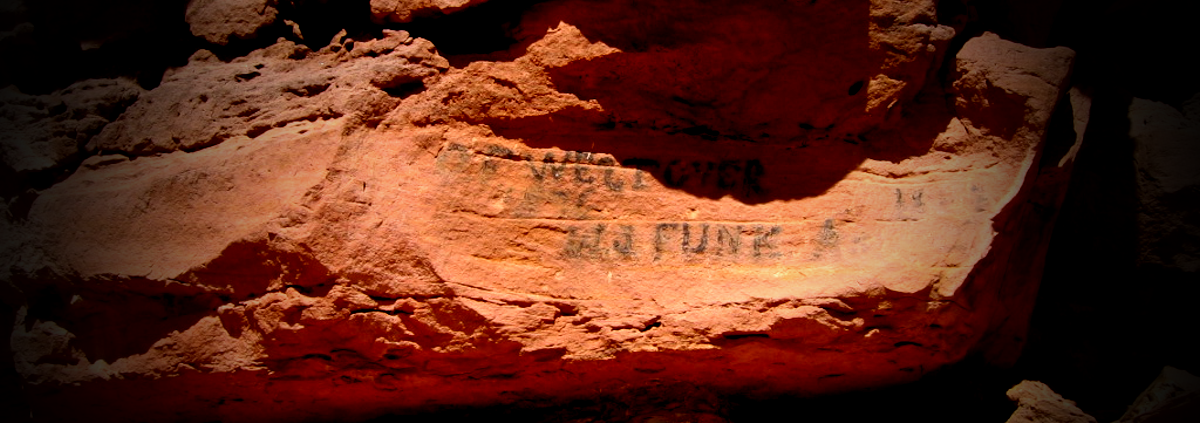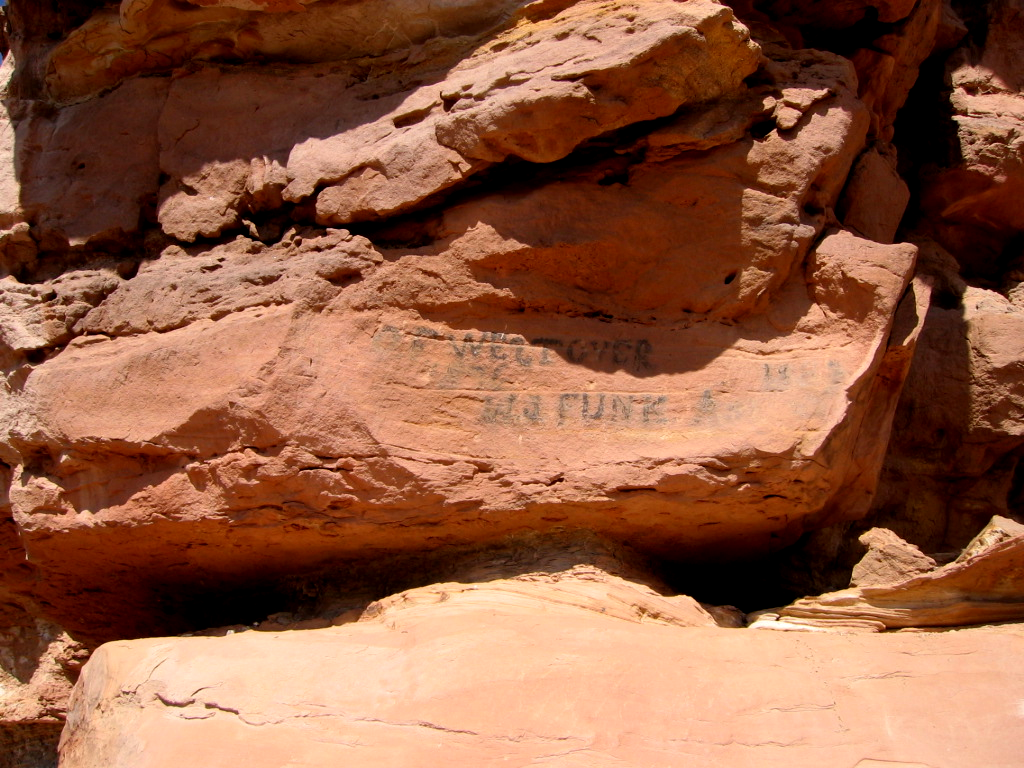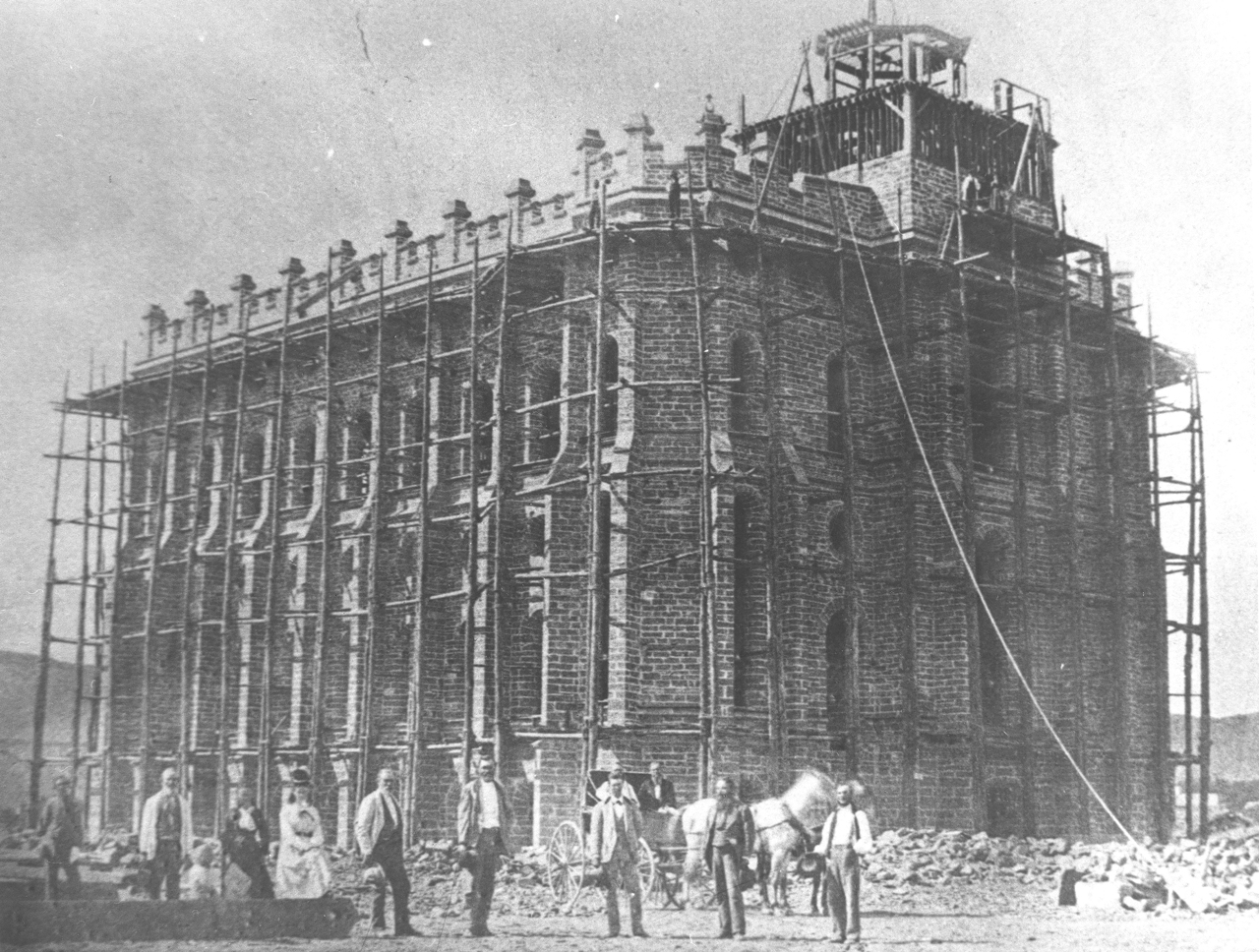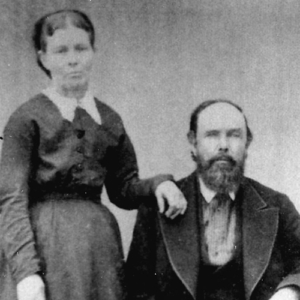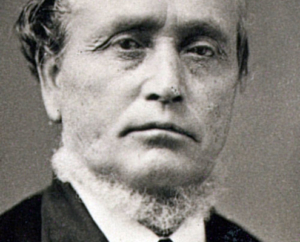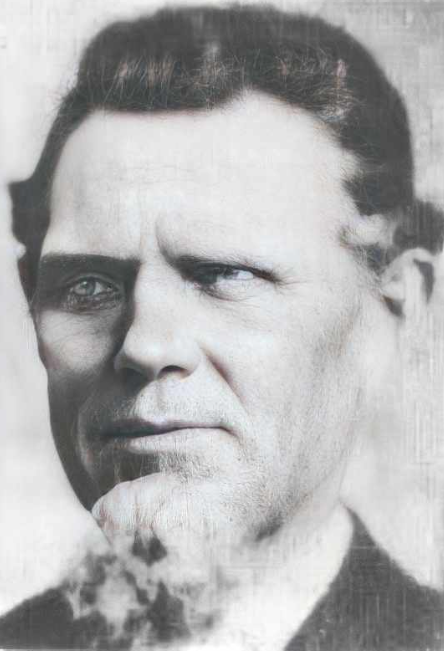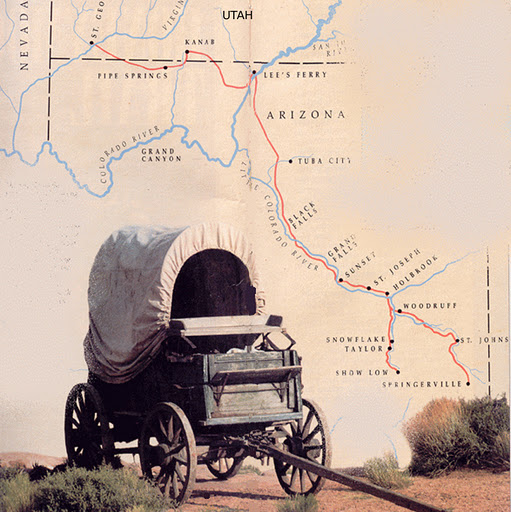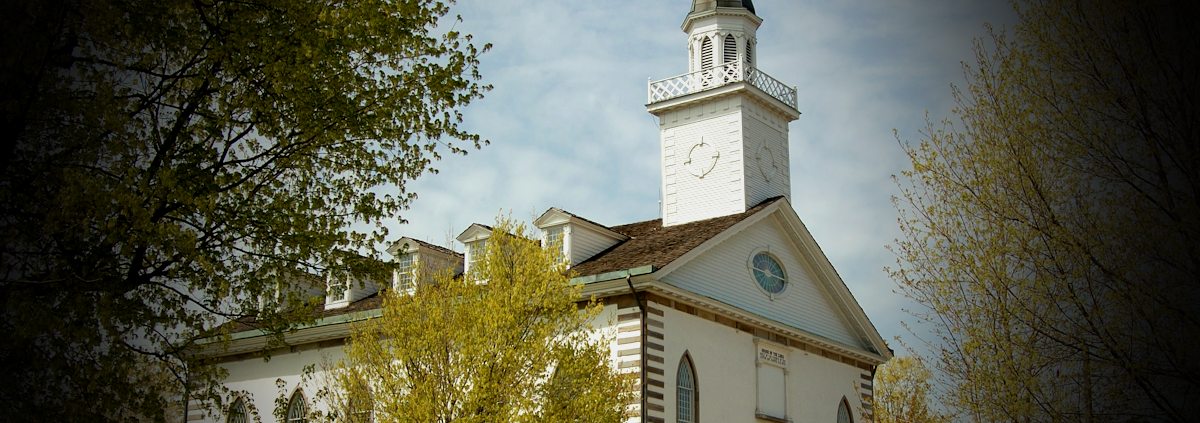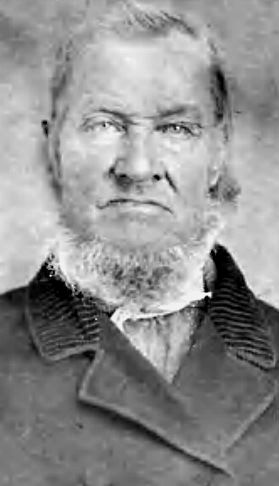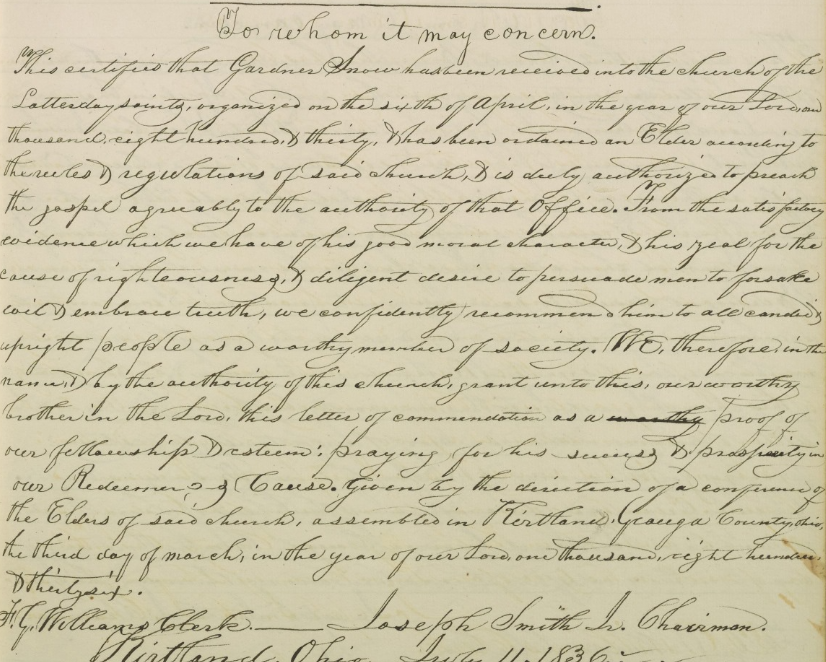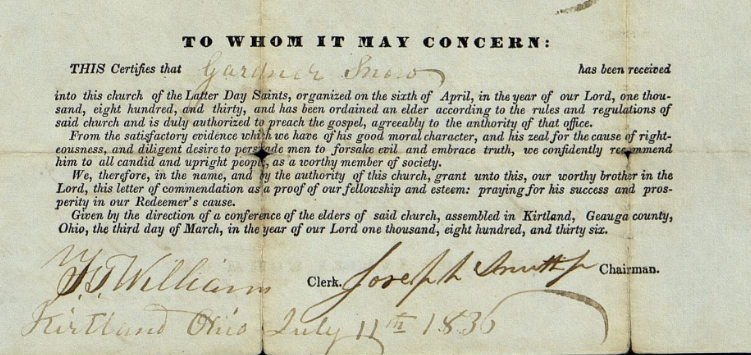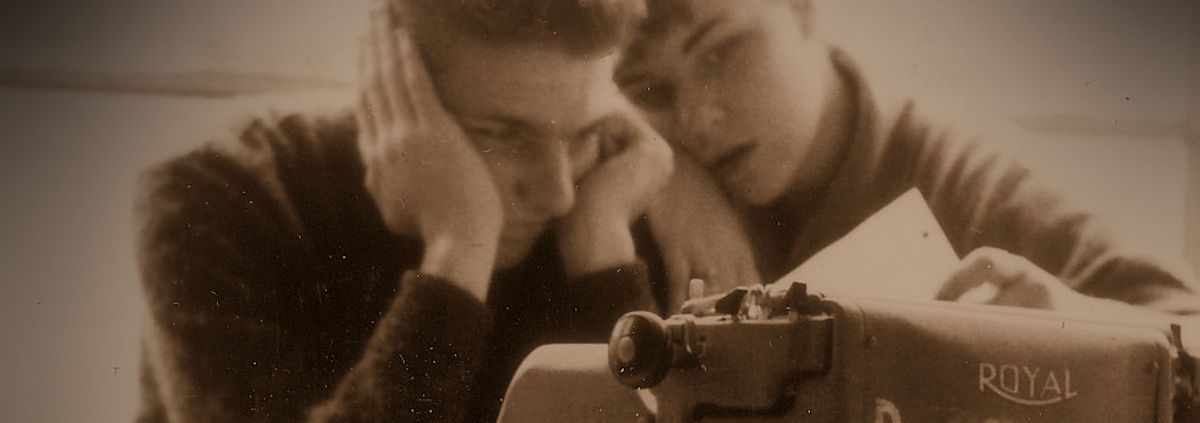Poke ‘Em in the Leg
Sandy and I had the chance to visit Manti this week for the temple open house. When the renovation work was announced a couple of years ago being able to see the Manti Temple before rededication quickly became a bucket list item.
But something unexpected happened to me on this visit to Manti.
It reminded me a bit of an occasion with Uncle Darrell when I was a teenager. I cannot exactly recall the circumstance but I do remember well exactly what he said to me. He was having a conversation with my father and I wasn’t paying much attention to what they were saying. Suddenly I felt a sharp poke in my leg and Darrell asked me, “What do you know about Albert Smith? Do you know who William Rowe was? What do you know about the Mormon Battalion? These men are your family and you need to know.”
For a moment I thought he was mad at me. It was a hard poke! Being startled, I looked up at him and there were tears in his eyes. He wasn’t mad – he was speaking from great conviction. He meant what he said, it was something he clearly felt very deeply about. I said, “Okay – I’ll learn.”
Well, I’ve learned.
The visit to Manti this week brought it upon me in so many ways.
~ Learning about Albert Smith ~
I credit the time I spent caring for my Dad the last year and a half of his life as a time when I gained a greater appreciation for Grandfather Albert Smith.
Albert lived in Manti. But that 42-year period of his history is only part of his story. I’ve told some of it here, about our family during the crisis year of 1856.
But we have shared before about the place Manti plays in our family history, too. It explains a bit more about Albert. In reading that again I was struck by memories of my own deep feeling for Albert as just a regular person.
That long piece on Manti’s place in our family history was a work that took better than a year.
It was a blessing to have that time during the pandemic to work on it. I had an employer who allowed me to work at home, giving me the opportunity to take care of Dad. But when I wasn’t working, and when Dad was feeling up to it, we dug deep into our family history.
I would put the family tree up on his TV in his bedroom so he could see the connections. And, of course, we would talk about the new discoveries that came up as we planned various projects.
Albert Smith was a project. Dad wanted a video (which I still need to complete). He would get frustrated a bit with me when I would post new stuff because he felt I am too wordy (I am but I’m not sorry).
And Albert was and continues to be one continual string of fascinating detail. I kind of wish I had Uncle Darrell around to talk about it with me now. I wonder how much of this stuff he knew and did not.
Dad and I found that Albert was referenced many times in a history that is published on the Sanpete County website.
That is where we learned a little more about the Indian troubles experienced in Manti and one violent incident that took place right in front of Albert’s home.
That story opened up one simple question in our minds: Where was Albert’s home?
Dad didn’t live long enough for me to discover that information. But several months ago I found this map showing the settler plots in Manti from the very beginning:
So that was one of my goals this week in visiting Manti.
Why was this such a big deal to me?
Albert Smith was an old man by the time the Manti temple was announced, constructed and dedicated.
He had aged and while he still worked his farm as best he could he had, by the time of the temple dedication in 1888, made several concessions to age. He sometimes just didn’t go to Church because his hearing had become so bad he couldn’t listen. Albert expressed his frustrations many times about slowing down.
But he was an avid watcher of the temple going up and he and Grandma Sophie, according to his journal, would visit the temple construction site to see up close how things were progressing.
When the dedication came, Albert was chagrined to get tickets to the 2nd day events. The first day events he would have to watch from his porch and he did, noting in his journal the masses thronged at the doors of the temple.
So finding Albert’s house was just a desire to connect with his real world view of the temple.
Using the map above, I located where his property was – and that of Gardner Snow – and tried to picture what Albert described.
I was a little disappointed.
Main Street in Manti has grown so much it was inconclusive to me if Albert really could see the temple from his house.
Then I stumbled upon this picture of the temple from around the time it was under construction:
This view is not too far north of Albert’s lot. Of course Albert could see the temple. And no wonder it became so important to him.
For many years Albert had written and sent money to a genealogist back east to research his ancestors. As soon as that temple was dedicated Albert noted in his journal the many times he and Sophie and Azariah and other family members went to the temple to work on family names.
Take a good look at that hill.
That hill was where that original pioneer group sent by Brigham Young lived in the winter of 1849-50. Albert noted in his journal about the rattle snakes they found there and the work it was to remove them all. Contrast that to the history of hill as it became known in Albert’s day, with Moroni dedicating that spot for a temple, long before our pioneers ever got there.
Even now, driving into Manti from any direction, the temple dominates the valley. It is the center of everything. Symbolic in every way.
~ The Temple ~
In our tour of the temple we learned that the remodel was not really an effort to change the facility. We were told there were some structural issues that caused roof leaks, that electronics and computer infrastructure were upgraded, and that the famous murals of this pioneer temple were painstakingly restored after having faded.
Other than that, the temple remained pretty much the same it was when originally dedicated. I guess that is why is has only been closed about two years.
All the furniture is the same. The intricate wall and window coverings are the same. The detail work on every door, every handle, every piece of trim in every room is exactly the same.
I swiped these images from the Church website of some of the interior of the temple:
This is the creation room. Those benches are original, as are those upholstered chairs. The mural has been “restored”.
To my knowledge, Albert and Sophie did all the various ordinance work for those names they were able to obtain. Interestingly, though Albert was bent by age he found he did not need to use his cane once he got inside the temple.
Sandy made this week’s visit having come off of heel surgery just a few months ago. We knew that getting up and down the temple stairs would be an issue for her. Back in Albert’s day he had to navigate those stairs and he had to climb that hill to get inside the temple.
So as we look at this baptistry below, and think about the 1400 family members Albert and others were baptized for between 1888 and 1892, it represents no small amount of physical effort:
Albert and Sophie, of course, were not the only family members who made the Manti temple a focal point.
In fact, as various family members have made their way to Manti this month they are noting with fondness the weddings, endowments and temple experiences of all previous generations.
My grandparents were sealed in Manti in 1940.
In thinking about that before this week it didn’t occur to me that Manti has more sealing rooms than most temples.
Even more, the sealing rooms in Manti are all unique – unlike each other. Look at this incredible room:
What kind of world was it in the 1880s that allowed such creation in Manti, Utah? This was some special generation.
The craftsmanship of all the woodwork and furniture is credited to a lot of talent brought over from our Danish ancestors, which was no small community there in Manti.
The design, the financing, the ground-level preparation, the stone cutting and hauling, and the construction of the Temple took 11-years and who knows how many man-hours to accomplish.
But records were kept. Here is an example, of a donation of labor – one of several, no doubt, made by Grandfather Gardner Snow:
Note the date of this donation – February 18th, 1878. That means that Gardner Snow, at age 85, made this donation to the temple by working with his hands. Gardner Snow was, by this time, a man of means. He had a ranch. He was a probate judge. He doubtless could have just donated cash. He didn’t. He went and gave of himself.
The Temple was built with many, many such contributions. That is what it meant to those people.
For Albert, his temple experience began in Nauvoo. The anticipation of another temple in his lifetime was great. In his journal, from 1877, he mentions traveling to St. George to see the temple there:
October 30th, 1877 – “…We left on September 28th and had a very good journey there in 7 days, a distance of 220 miles, found Hannah and the rest of our friends well. It being only 24 miles from St. George we went there to see the Temple. I shall not describe the building. I will only say it was finished outside and all of the rooms in the lower stories. The outside is as white as the driven snow. It was worth going some way to see…”
In April 1878 Albert talked of meetings held in Manti. “…President Young, Brother Wells and company came here from St. George and held meetings in the evening…They selected the spot for the Temple and had the place staked off and surveyed. Today there was a meeting at 10 o’clock to 12 o’clock they repaired to the place and had the place dedicated…Next Monday we are to commence to build the Temple…”
Albert kept close tabs on the work of the Temple. His New Year’s day journal entry gives all the dimensions of the temple, including how many steps needed to be made (126) at the entrance. He noted that there were “…150 to 200 hands to work they put in 15 kegs of powder in one blast which lifted at least 2500 yards of rocks and debris weighing at least 2500 tons…”
Around that same time, Albert noted: “A few days ago I sent $15 to Brother Cummings Jr living at Salt Lake who is going ast to get the genealogy for the brethren that wishes to send by him. Anxious to procure all the name that I can….”
On his birthday in November 1878, Albert noted this in his journal: “I am 74 years old. How many more birthdays I shall live to see I do not know. Sometimes I feel as though it mattered not if I am only prepared to go and then I feel anxious to live till the Manti Temple is finished and I have an opportunity to enter there in and attend to the ordinances for my Father’s House, those that died without having an opportunity of hearing the Gospel. O my Father in Heaven, I ask thee in the name of Thy Son to spare my life if it is consistent to Thy will till the Temple is finished and I have an opportunity to enter therein and attend to the ordinances for my friends that died without having an opportunity to attend to themselves. Even those ordinances that were ordained before the world was made for the salvation and exaltation of all the sons and daughters of Father Adam, except the sons of perdition, even those that sinned against the Holy Ghost that have no forgiveness in this world nor in the world to come. And O my Father help me to so live that I may be found worthy of that privilege and may they holy spirit inspire the saints to go with their might and labor diligently till the House of the Lord is completed.”
In 1880 Albert reported that fireworks were displayed over Temple Hill on the 4th of July and that by the fall the walls had reached 30 feet in height. All needed stones for the temple were cut and numbered, making faster work of the walls going up.
In 1883 Albert at long last was able to report on the project of securing his genealogy. “He wrote me soon after he returned that he had procured several hundred names of my forefathers and would be pleased with the when he got them so arranged that he could send them to me. Surely I am pleased with them there being upwards of 400 from my great grandfather whose name is Rev. Henry Smith who was the first Baptist minister in the place he lived in England. He came over 16 years after the landing of the Mayflower….”
In May, Albert was asked to speak in Church on the subject of Baptism for the Dead. He said in his journal: “One week previous I received 400 names in addition to 100 previous I had of my forefathers. It caused me to reflect on that subject a few nights previous to that meeting. As I was meditating on the principles of baptism for the dead, it seems as tho I was surrounded with the spirits of my forefathers opening the principles to my mind, giving me understanding that they was looking to me and my children to attend to those ordinances for them that they cannot attend to themselves. Not only did the open the principles in my mind but they showed me the necessity of my stirring up my children to faithfulness and to so live that we might be prepared when the Temple is finished to go there as well as the brethren and sisters and attend to those ordinances for which the Temple is built. Suffice it to say that I did not sleep none all night for it seemed as tho they was with me till day light opening my mind to many things.”
In December 1886, Albert said this: “ …I went with Azariah to the Temple. We spent 3 hours or more viewing all the rooms. We went to the top of the west tower. I will not try to describe the beauty of some of the rooms but leave it to those who are permitted to go there to contemplate on the beauty and use of these rooms…”
Dedication day came on May 21st, 1888. Albert noted: “There are so many here not one half could get in! There was excellent preaching by the Twelve and others….It is now 20 minutes after 11 o’clock. I can stand in my door and see crowds of people in front of the Temple that cannot get in. The service commenced at 10 o’clock.”
As I viewed these rooms and took in all the rich detail I was moved by my memories of Albert’s many journal entries of doing work for his ancestors.
He would work on 20 or 30 names at a time and his journal notes each time he went in the last years of his life.
In fact, the bulk of Albert’s journal entries until he died noted frequent temple attendance and records how he and Grandma Sophie enlisted their help of children and grandchildren in getting all those names worked on.
Thoughout these years Albert continued to learn about his ancestors. In 1888 he noted, “The other day there was a book put in my hand that contained the record of John Alden who came in the Mayflower and the first one that stepped on Plymouth Rock and the last one that died of that crew. I think he was my mother’s 3rd great grandfather.”
Albert and Sophie continued to go to the temple. In December 1891 Albert noted that their temple routine was interrupted slightly because of the “grandchildren that were with us”.
These were likely the children of Albert Jr. and his new bride Mary Ann, who were married in the Manti Temple on December 16th. Albert and Sophie were there to witness it.
His last noted entry in his journal of temple attendance was in June 1892, some four months before he died. Albert freely noted that sons Azariah and Albert Jr “had helped” during some of his final sessions.
While I am aware of all our ancestral family who have attended the Manti Temple – particularly contemporaries such as Gardner Snow, who no doubt attended frequently as well – it is Albert who most occupied my mind while touring the temple he visited so many times.
In fact, it occurs to me that Darrell’s poke to my leg was really just a proxy work for Albert, who pokes me in the heart.
I want Albert’s story known but I especially want what Albert’s prayer as noted from his journal above known by my children and grandchildren. For generations to come I want them to hear his words, his witness and the desires of his heart as it comes to the sacred temple.
His feelings, in this regard, are my feelings. He expresses them better.
May we reflect on them often.
